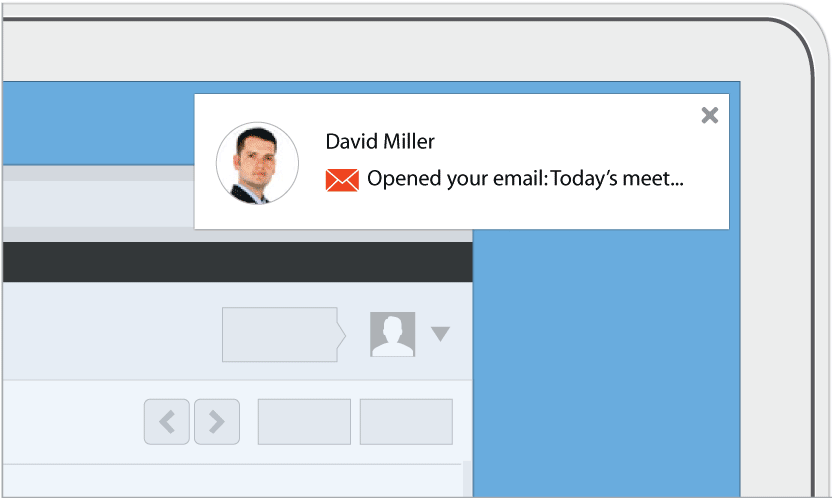 If there’s one thing recruiters may never tire of, it’s trash talking other recruitment companies.
If there’s one thing recruiters may never tire of, it’s trash talking other recruitment companies.
If you’ve spent any time at all in this industry, you’ve surely heard the self-congratulatory small talk, the profanity laced tirades dripping with animosity, all directed squarely at whatever recruitment company it is they happen to be the most pissed off at this month.
The target of this vitriol might change, depending on which agency most recently scooped them on a candidate or client, but the accusations are almost always the same.
You know. Something along the lines of: “screw those miserable assholes,” or “I’d like to kick the shite out of everyone of those idiots over there.” Only much more profane and generally accompanied by lewd hand gestures and or fist pounding.
Don’t Look Back in Anger.
It doesn’t matter which recruitment firm you work for, the sense of ‘us vs. them’ is pretty much pervasive. Every recruiter at the agency has some story about some friend at some other firm, and the kind of shit that goes down over there, the dodgy business practices and the dirty games they play with clients and candidates.
We chastise the other guys for giving a black eye to the entire recruitment business, comfortable on our pedestal and confident in the fact that they’re somehow different, somehow better, than the rest of those pricks out there. We swear how the industry would be better off without those charlatans calling themselves ‘recruiters’ or those money grubbing agencies they work for, willing to do anything, no matter how nefarious, just to make a placement. Get rid of the whole lot of ’em, and we’d all be better off.
This, of course, bears striking similarities to watching the UK debate the upcoming referendum on talks to secede from the European Union, a vote better known as “Brexit.” Just like the war of wars between two feuding agencies, both sides in this battle seem to be doing a whole lot of shittalking and self-posturing while suddenly flinging around their newly found expertise on the finer points of trade laws, tariffs and treaties.
Hell, overnight, somehow everyone became a bloody expert on diplomatic relations, macroeconomics and other topics that have gone from dreadful to de rigeur in a matter of mere days.
There’s a whole lot of chest thumping, brow beating and the thundering din of too much noise and too little substance – similar to listening to a group of recruiters, while everyone speaks like great conviction and confidence that they know what they’re talking about, and they know better than the other side, even if everyone knows that they do not, in fact, know shit.

Stop Crying Your Heart Out.
Now, I’ve spent the past week or so having no fewer than 30 (yes, I know, it was quite a lot, really) conversations with different recruiters from across the UK regarding the upcoming Brexit vote and the potential impact that the United Kingdom opting out of the EU could have on the recruitment industry.
The opinions were, naturally, quite different, the conversations contentious – as is anything even tangentially related to this hottest of hot button issues. There was, however, one strange similarity connecting these dramatically divergent viewpoints – each was delivered with the absolute assuredness and certainty of someone who not only knows they’re right, but knows with great confidence that the other side is absolutely in the wrong.
They are so damned passionate about their opinion, so vocal about where they stand on Brexit, and have absolutely no problem pulling up a litany of arcane facts and esoteric figures as supporting evidence of the certainty of their convictions. To tell you the truth, it’s bloody annoying, these suddenly self-righteous, self-styled political pundits.
And I am jealous of each and every one of them. See, I seem to be maybe the only person in the entirety of the United Kingdom who can’t say with 100% certainty where I stand on this issue. I don’t know how to defend it, really don’t know which side to believe or what the implications for the referendum might ultimately be.
Hell, I can’t even decide what to wear on any given morning, and you’ve got all these guys who are suddenly so adamant about the future of our country and our industry. Everyone wants their voice to be heard, and the shouting match has only increased in volume and venom as the vote draws closer and closer.
And yet, here we are – the calm before the storm, so to speak, occupying our time before going to the ballot box by sitting in our respective little corners, trash talking the EU or defending it, depending on which side of the room you happen to be sitting on.
Now, some recruiters will tell you that the EU has never done anything for business in the UK, except for levy some bullocks trade tax that Brexit would get us out of, thus saving the UK something along the lines of 18 billion euros each and every year, so choosing to go makes sense not just for British business, but for the bottom line.
Think of that: it’s like finding an extra 18 billion (with a capital “B”) bloody Euros in your pocket, and who the hell wouldn’t want that? I mean, I get excited when I find a pound buried in the cushions of the sofa, much less billions of Euros less of annual tax obligation every average Brit (like me) stands to suddenly find under the couch, should Brexit become a reality.
Some recruiters would (and Lord knows, have) argued that the impact of leaving the European Union will aversely affect both business competitiveness and overall economic growth, damaging both British employment and our ability to attract international investment or business.
This, as recruiters see it, will royally fuck pretty much their entire hiring pipeline as the next few years unfold, as jobs dry up and the economy stagnates under the weight of its own isolationism. It’d be the end of the UK as we know it, and we’d all be royally screwed, so they say, adamant that the only way our industry (or any industry) can compete is by remaining part of the EU and connected to the capital needed to drive business forward.

Don’t Go Away.
Now, I live in London, which remains the epicenter for European finance, containing more corporate headquarters and more companies generating more revenue and more investment dollars than any other city in the continent. The City has always been the heart through which the world’s economy pulses, or at least since the days when the sun never set on British business.
But with dusk seemingly on the horizon, the long night ahead looks downright frightening, since as a resident of London, a downturn in the economy precipitated by our opting out of the EU would mean that my overall job prospects would immediately decrease as the pool of jobs gets a whole lot smaller while the competition for those jobs will suddenly spike.
Now, I don’t even fancy a new job, but to be honest, the mere thought of hundreds of companies shutting down shop and moving out overnight gives me itchy feet (not to mention a sick feeling in the pit of my stomach). Were these jobs to relocate away from London and back into the EU, I’d find myself with imminently less options and fewer opportunities than I would have were we to stay, and suddenly, I’m wondering if I might not be better off going with them, if they go. It’s like catching a sudden case of corporate cabin fever.
I know that the arguments on this issue are as polarizing as the Brexit vote itself, and the opinions infinite – hell, I could regurgitate them all to you and provide you, as best as I can, of course, with some well reasoned, well balanced debate outlining the pros and cons of each argument in a balanced, transparent and completely unbiased way.
Acquiesce.
 But that would be boring for both of us, and neither of us have the time to go through the infinite possibilities and hypothetical implications of Brexit. There’s a million articles out there that, should you be one of the few of us left sitting on the fence, would probably help inform your decision and provide you with far greater clarity than I could ever hope to – I know what I don’t know, which on this particular topic, is admittedly quite a lot.
But that would be boring for both of us, and neither of us have the time to go through the infinite possibilities and hypothetical implications of Brexit. There’s a million articles out there that, should you be one of the few of us left sitting on the fence, would probably help inform your decision and provide you with far greater clarity than I could ever hope to – I know what I don’t know, which on this particular topic, is admittedly quite a lot.
While it might seem that recruitment professionals throughout the UK have all transformed themselves into experts on international law and economics, I certainly admit I’m woefully ignorant on these matters (and am comfortable with that).
What I do know, however, is that at this exact moment, we’re shouting at each other at the top of our lungs, but no one is actually listening. Just this past week, Jo Cox, a member of British parliament, an MP, for the love of God, was murdered in cold blood, her killer justifying his unjustifiable act by claiming that he had “put Britain first.”
I don’t give a shit where you stand on this issue, or which side wins, or even which is right or wrong. It’s completely irrelevant, really, because right now, we are spiralling dangerously out of control.
As our collective blood boils and the anticipation of the upcoming referendum grows more pervasive and contentious by the day, people are doing a whole lot of stupid shit, saying absolutely despicable, hurtful things and acting like complete arses; manipulation, game playing and misanthropy are at an all-time high (at least since the Thatcher administration). This got me to thinking that we actually might very damned well need a regulatory body here in the UK, after all.
It’s an argument that recruitment has maintained over the course of many years, that it’s the low barriers to entry, shady dealings and lack of overall governance (or regulations) that make the employment industry so rife with seemingly shady deals, crooked consultants and a piss poor public perception. This is the reason candidates often avoid working with recruiters, or why some companies unilaterally refuse to work with them on their jobs, period.
Live Forever.
 We are all in this industry together, and we all know how the sausage is made, and the stuff that happens to get deals done which are cut below deck, hit below the belt, or fly below the radar of most candidates and clients (recruiters, you know exactly the sort of shady shit I’m talking about).
We are all in this industry together, and we all know how the sausage is made, and the stuff that happens to get deals done which are cut below deck, hit below the belt, or fly below the radar of most candidates and clients (recruiters, you know exactly the sort of shady shit I’m talking about).
It’s when I listen to the latest mud-flinging and trash talk about the other agencies that I think to myself maybe, just maybe, recruitment needs someone to regulate our profession.
Even if that’s limited to occasionally stepping in and telling us to cut out the shit, or else. We’d all go back to work, thank you very much, and do so knowing that someone, somewhere, is watching over our shoulder, waiting for us to screw up and stop playing by the rules.
This, of course, is basically the EU, because, let’s not forget, this is an organization born after World War II more or less destroyed the entirety of Europe, and recovery from the unprecedented divisiveness and wanton destruction took decades for the continent to come back from.
Now, take out all the angles and arguments for or against Brexit, or the possible impact leaving the EU could have on the recruitment industry or talent trends, and you’ll find that the entire point of creating the EU was to prevent history repeating itself.
By banding together for the greater good, we would stop ripping each other to shreds and spend our energies on mutual advancement and improvement (in theory). The EU was created to moderate competing interests and resolve diverging interests by trading conflict for compromise, replacing individual emotion and egos with a collective ethos of cooperation.
Two World Wars and the ensuing Cold War proved that we could not resolve our differences by ourselves. I’ve had enough conversations with recruiters to know that if outsized egos aren’t held in check, conflict will almost inevitably ensue. Britain is no different, and shouldn’t be freed from accountability to our commitments in favor of satisfying our own sense of self, however objectively overinflated or grandiose that may or may not be.
Britain might be an island, but it need not isolate itself from the outside world through self-imposed and unnecessary exile.
Roll With It.
 Yes, the EU does impact huge amounts of our legislation and policy here in the UK, but who can say that independence from EU membership is going to positively impact either of these things? Who can honestly assert that without having an outside opinion or external oversight would damage the quality of life or way of life of your average British citizen?
Yes, the EU does impact huge amounts of our legislation and policy here in the UK, but who can say that independence from EU membership is going to positively impact either of these things? Who can honestly assert that without having an outside opinion or external oversight would damage the quality of life or way of life of your average British citizen?
Both Britain and recruiters have the same tendency towards self-indulgence (often bordering on narcissism), of innate infallibility and smug superiority, and both the UK and our industry do so love to think of ourselves as always in the absolute right, even when we’re absolutely wrong. With Brexit looming, maybe it is indeed time we check ourselves before we wreck ourselves – well, not just ourselves, but everything else, really.
Recruitment is like a weather vane for the world markets, and as the winds of change swirl around the upcoming referendum, it’d be naive to think that our industry would not suffer some sort of impact, adverse or otherwise, as a result of the outcome of Brexit. Leaving the EU will impact every employer and every recruiter.
Of course it will, and it’s idiotic to think otherwise. As markets shift, so too do recruiters, and with our industry so heavily dependent on those markets remaining bullish and prosperous, we’d be wise to think carefully about the short and long term implications that the outcome will have on recruiting, one way or another.
Now, I’m not naive enough to recognize that leaving the EU wouldn’t also bring benefits, and I’m sure that we’d likely realize some sort of upside were Brexit to become reality, but the truth is, none of us, not even the politicians with their silver tongues and shiny suits (and Jeremy Corbyn, though he has neither), no one has any way of knowing enough about what implications an exit would really have to confirm or deny any actual, tangible outcomes which would result either way.
The Masterplan.
 But make no mistake. On June 23, I will cast my vote to remain part of Europe, to stay in the EU and to stay connected with my fellow Europeans instead of casting my lot that we’d be better off on our own.
But make no mistake. On June 23, I will cast my vote to remain part of Europe, to stay in the EU and to stay connected with my fellow Europeans instead of casting my lot that we’d be better off on our own.
This is not because I am worried about the implications Brexit would have on hiring and the talent acquisition industries upon which my income is incumbent; that part of the equation will eventually even itself out, and I don’t forsee the same apocalyptic implications as so many others voting “no” on the 23.
No. Instead, I’m concerned about the message we’d be sending out to the rest of the world in leaving the European Union, and it is not one that as a British citizen who’s deeply proud of her country I am in any way comfortable with.
We are not, whether as Brits or as recruitment professionals, above outside advice, external regulation or preventative intervention, and we’re certainly not above being told when we may step up or down. Having someone to keep us in line is something we all need, whether or not you’re willing to admit this fact.
I hope that when the time comes for the referendum, when we go as a country to the ballot box and vote for our collective future, that we stop thinking about ourselves for once, take our egos out of the equation and remember that we need to have the good grace to realize that because none of us are infallible, we must turn to others to help us become better – as a country and as a profession.
This is why I’m voting no on Brexit. And if you’re in recruitment, you’d be daft not to do the same. We don’t want to be that other agency to the rest of the bloody world now, do we?
 About the Author: Salma El-Wardany, Head of Marketing, Recruitment Entrepreneur cut her teeth in recruitment at a global Plc, working in business development to win new clients and accounts into the company. She gave up corporate life in favour of the startup world, specifically recruitment startups.
About the Author: Salma El-Wardany, Head of Marketing, Recruitment Entrepreneur cut her teeth in recruitment at a global Plc, working in business development to win new clients and accounts into the company. She gave up corporate life in favour of the startup world, specifically recruitment startups.
Salma spends her days advising recruitment companies on their marketing, digital and branding strategies, and how to make their voice heard in an industry that is already overcrowded and full of voices clamoring to be heard. By night, she writes about many things, mainly all the things in recruitment that vex her.
Check out her blog, The Chronicles of Salma or connect with her on LinkedIn.






 Joshua Morris is the VP of Recruiting for Virtuoso Resumes. With more than 20 years of experience as a hiring manager, sales executive, and B2B hunter, his singular goal is to 1st understand what his clients need through detailed benchmarking, and then find a small selection of candidates to present – all of which exceed expectations. He is also a US Navy veteran. Reach out to him on
Joshua Morris is the VP of Recruiting for Virtuoso Resumes. With more than 20 years of experience as a hiring manager, sales executive, and B2B hunter, his singular goal is to 1st understand what his clients need through detailed benchmarking, and then find a small selection of candidates to present – all of which exceed expectations. He is also a US Navy veteran. Reach out to him on 



 No matter how much we encourage initiatives for women or inclusion programs, companies still can’t find a way to recruit women. With the rise of “Brogrammers” or a “
No matter how much we encourage initiatives for women or inclusion programs, companies still can’t find a way to recruit women. With the rise of “Brogrammers” or a “
 Textio
Textio
 Full disclosure: I don’t cook. In fact, when left unsupervised, I have been known to produce something that can’t be cut let alone eaten. I do make a mean toast ensemble coupled with a slightly-larger-than-normal bowl of Honey Nut Cheerios.
Full disclosure: I don’t cook. In fact, when left unsupervised, I have been known to produce something that can’t be cut let alone eaten. I do make a mean toast ensemble coupled with a slightly-larger-than-normal bowl of Honey Nut Cheerios.



 About our Author: David Nicola has over 15 years of experience in various Human Services functions and has been in staffing since 2010. He currently serves as a Technical Sourcer at Bay Area startup Delphix and was the founder of Central Coast Recruiters on Meetup. When he’s not hunting for killer Engineering talent, he’s spending quality time with his awesome family and watching his beloved San Francisco Giants. You can connect with him on
About our Author: David Nicola has over 15 years of experience in various Human Services functions and has been in staffing since 2010. He currently serves as a Technical Sourcer at Bay Area startup Delphix and was the founder of Central Coast Recruiters on Meetup. When he’s not hunting for killer Engineering talent, he’s spending quality time with his awesome family and watching his beloved San Francisco Giants. You can connect with him on 
 It sounds fairly obvious, but as much as we talk about company culture, we forget that regardless of industry and no matter what size their workforce may be, this construct – and indeed the strategic and business direction of the company itself – is defined entirely by the people who work there.
It sounds fairly obvious, but as much as we talk about company culture, we forget that regardless of industry and no matter what size their workforce may be, this construct – and indeed the strategic and business direction of the company itself – is defined entirely by the people who work there.
 If you truly want to attract the top talent on the market, then you’ve got to actually commit resources to recruiting; remember, you get what you pay for, and no high growth company can afford the opportunity costs associated with underfunding this mission critical function. The flat out truth is that hiring organizations, just like every other business unit at a company, need a budget if it’s going to have any shot at success.
If you truly want to attract the top talent on the market, then you’ve got to actually commit resources to recruiting; remember, you get what you pay for, and no high growth company can afford the opportunity costs associated with underfunding this mission critical function. The flat out truth is that hiring organizations, just like every other business unit at a company, need a budget if it’s going to have any shot at success. Executive leaders must actively work to
Executive leaders must actively work to  Diversity can’t be seen as an associated outcome of recruiting, but rather, as a deliberate part of your talent acquisition strategy, with inclusion initiatives becoming increasingly imperative for building a company culture and successfully growing your business and bottom line.
Diversity can’t be seen as an associated outcome of recruiting, but rather, as a deliberate part of your talent acquisition strategy, with inclusion initiatives becoming increasingly imperative for building a company culture and successfully growing your business and bottom line. In the past, many organizations have relied on the traditional post and pray mentality for talent acquisition, but we all know by now that the best candidates almost never proactively approach a business.
In the past, many organizations have relied on the traditional post and pray mentality for talent acquisition, but we all know by now that the best candidates almost never proactively approach a business. Every startup wants to beat their respective competition, which is why it’s essential for CEOs to remember that hiring is, inherently, a highly competitive action.
Every startup wants to beat their respective competition, which is why it’s essential for CEOs to remember that hiring is, inherently, a highly competitive action.





 You see, I have my degree from the University of Phoenix, and it’s an accomplishment I’m damned proud of, thank you very much.
You see, I have my degree from the University of Phoenix, and it’s an accomplishment I’m damned proud of, thank you very much.
 “Higher education is today a booming industry, feeding on the student loans handed out to the desperate.”
“Higher education is today a booming industry, feeding on the student loans handed out to the desperate.” In the culture of college athletics, it’s all about winning at any cost, but it’s easy to forget it’s the average student (and their personal finances) who are almost always the real loser in the ever escalating NCAA arms race.
In the culture of college athletics, it’s all about winning at any cost, but it’s easy to forget it’s the average student (and their personal finances) who are almost always the real loser in the ever escalating NCAA arms race.

 If there’s one thing recruiters may never tire of, it’s trash talking other recruitment companies.
If there’s one thing recruiters may never tire of, it’s trash talking other recruitment companies.

 But that would be boring for both of us, and neither of us have the time to go through the infinite possibilities and hypothetical implications of Brexit. There’s a million articles out there that, should you be one of the few of us left sitting on the fence, would probably help inform your decision and provide you with far greater clarity than I could ever hope to – I know what I don’t know, which on this particular topic, is admittedly quite a lot.
But that would be boring for both of us, and neither of us have the time to go through the infinite possibilities and hypothetical implications of Brexit. There’s a million articles out there that, should you be one of the few of us left sitting on the fence, would probably help inform your decision and provide you with far greater clarity than I could ever hope to – I know what I don’t know, which on this particular topic, is admittedly quite a lot. We are all in this industry together, and we all know how the sausage is made, and the stuff that happens to get deals done which are cut below deck, hit below the belt, or fly below the radar of most candidates and clients (recruiters, you know exactly the sort of shady shit I’m talking about).
We are all in this industry together, and we all know how the sausage is made, and the stuff that happens to get deals done which are cut below deck, hit below the belt, or fly below the radar of most candidates and clients (recruiters, you know exactly the sort of shady shit I’m talking about). Yes, the EU does impact huge amounts of our legislation and policy here in the UK, but who can say that independence from EU membership is going to positively impact either of these things? Who can honestly assert that without having an outside opinion or external oversight would damage the quality of life or way of life of your average British citizen?
Yes, the EU does impact huge amounts of our legislation and policy here in the UK, but who can say that independence from EU membership is going to positively impact either of these things? Who can honestly assert that without having an outside opinion or external oversight would damage the quality of life or way of life of your average British citizen? But make no mistake. On June 23, I will cast my vote to remain part of Europe, to stay in the EU and to stay connected with my fellow Europeans instead of casting my lot that we’d be better off on our own.
But make no mistake. On June 23, I will cast my vote to remain part of Europe, to stay in the EU and to stay connected with my fellow Europeans instead of casting my lot that we’d be better off on our own. About the Author: Salma El-Wardany, Head of Marketing, Recruitment Entrepreneur cut her teeth in recruitment at a global Plc, working in business development to win new clients and accounts into the company. She gave up corporate life in favour of the startup world, specifically recruitment startups.
About the Author: Salma El-Wardany, Head of Marketing, Recruitment Entrepreneur cut her teeth in recruitment at a global Plc, working in business development to win new clients and accounts into the company. She gave up corporate life in favour of the startup world, specifically recruitment startups.
 There are a lot of tools that try to leverage the power of LinkedIn, but let’s be honest. Most of these tools are lightweight or have little to no potential.
There are a lot of tools that try to leverage the power of LinkedIn, but let’s be honest. Most of these tools are lightweight or have little to no potential.
 Have you ever known where someone worked but didn’t know their email address?
Have you ever known where someone worked but didn’t know their email address?  Ryan Leary is COO of RecruitingDaily and is responsible for driving technology and innovation into the recruiting community. Ryan helps create the processes, ideas and innovation that drives the community at RecruitingDaily. He’s our in-house expert for anything related to sourcing, tools or technology. A lead gen and brand buzz building machine, he is the force behind the marketing automation process for some of the industries top fortune brands and some of the most progressive startups in our space.
Ryan Leary is COO of RecruitingDaily and is responsible for driving technology and innovation into the recruiting community. Ryan helps create the processes, ideas and innovation that drives the community at RecruitingDaily. He’s our in-house expert for anything related to sourcing, tools or technology. A lead gen and brand buzz building machine, he is the force behind the marketing automation process for some of the industries top fortune brands and some of the most progressive startups in our space.




 When you do a standard
When you do a standard